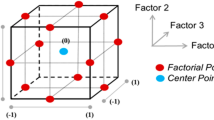Abstract
Ultrasonic metal welding (USMW) has proven to be a suitable technique for joining electronic components such as battery cells. However, despite its widespread application, the USMW process still suffers from considerable quality fluctuations. The fluctuations largely originate in the lack of profound scientific knowledge and understanding of the interdependency between the tools and joining members. Therefore, this paper aims to investigate the in-situ oscillation behavior of the USMW process by using a high-speed image capturing. The recorded image-sequences are analyzed by a two-frame motion Gunnar Farnebäck algorithm. A two-dimensional vector field is obtained from which the displacement and relative movement between the tools and the joining members can be computed. Different welding parameters and metal alloys (AW-1050A, CW-008A) are set to study their effects on welding sequence. Microstructural investigations and T-peel tensile testing are used to validate the high-speed observations. Based on the measured amplitude profiles, USMW can be divided into six characteristic welding stages. Additionally, the measurements illustrate the dependence of the bond formation on the welding parameters and in particular on the welded materials. The results provide a more profound understanding of the thermo-mechanical mechanism during USMW and will introduce a prospective improvement in quality and process stability.










Similar content being viewed by others
References
Adam, T.1999: Ultraschallschweißen ausgewählter Aluminiumlegierungen mit erhöhter Festigkeit. Magdeburg, Otto-von-Guericke-Universität Magdeburg, Institut für Füge- und Strahltechnik. Dissertation.
Wodara, J., Herold, H. (Hrsg.): Ultraschallfügen und -trennen : Band 1 der Grundlagen der Fügetechnik. Düsseldorf : DVS Verlag, 2004 (Fachbuchreihe Schweißtechnik 151)
Lee, S. S. ; Kim, T. H. ; Cai, W. W. ; Abell, J. A:(2014) Parasitic vibration attenuation in ultrasonic welding of battery tabs. In: International Journal of Advanced Manufacturing Technology 71 , 1–4, S. 181–195
Harthoorn, J. L:1978 Ultrasonic Metal Welding. Eindhoven, Technische Hogeschool Eindhoven. Dissertation.
Fujiia, H. T. ; Goto, Y. ; Sato, Y. S. ; Kokawa H.(2014): Microstructural evolution in dissimilar joint of Al alloy and Cu during ultrasonic welding. In: Materials Science Forum 783–786 , S. 2747–2752
Shimizu S, Fujii HT, Sato YS, Kokawa H, Sriraman MR, Babu SS (2014) Mechanism of weld formation during very-high-power ultrasonic additive manufacturing of Al alloy 6061. Acta Mater 74:S. 234–S. 243
Lu Y, Song H, Taber GA, Foster DR, Daehn GS, Zhang W (2016) In-situ measurement of relative motion during ultrasonic spot welding of aluminum alloy using Photonic Doppler Velocimetry. J Mater Process Technol 231:S. 431–S. 440
Vries, E. de:2004 Mechanics and mechanisms of ultrasonic metal welding. Columbus, Ohio State University. Dissertation
Zhang, C: 2011 A thermomechanical analysis of an ultrasonic bonding mechanism. Logan, Utah State University. Dissertation.
Siddiq, A. ; Ghassemieh, E.(2009): Theoretical and FE analysis of ultrasonic welding of aluminum alloy 3003. In: Transactions of the ASME, Journal of Manufacturing Science and Engineering 131 , Nr. 4, 041007/1-11
Kim W, Argento A, Grima A, Scholl D, Ward S (2011), Nr. 7, S. 1093–1103) Thermo-mechanical analysis of frictional heating in ultrasonic spot welding of aluminium plates. Proc Inst Mech Eng B J Eng Manuf 225:1093–1103
Satpathy, M. P. ; Moharana, B. R. ; Dewangan, S. ; Sahoo, S. K.(2015): Modeling and optimization of ultrasonic metal welding on dissimilar sheets using fuzzy based genetic algorithm approach. In: Engineering Science and Technology, an International Journal 18 , Nr. 4, S. 634–647
Siddiq A, Ghassemieh E (2008), Nr. 12, S. 982–1000) Thermomechanical analyses of ultrasonic welding process using thermal and acoustic softening effects. Mech Mater 40:982–1000
Chen, K. K. ; Zhang, Y. S. ; Wang, H. Z.:(2016) Study of plastic deformation and interface friction process for ultrasonic welding. In: Science and Technology of Welding and Joining 22 , Nr. 3, S. 208–216
Sasaki, T. ; Watanabe, T. ; Hosokawa, Y. ; Yanagisawa, A.(2013): Analysis for relative motion in ultrasonic welding of aluminium sheet. In: Science and Technology of Welding and Joining 18 , Nr. 1, S. 19–24, 19, 24
Lee, S.2013: Process and quality characterization for ultrasonic welding of lithium-ion batteries. Michigan, University of Michigan. Dissertation.
Lee, S. S. ; Kim, T. H. ; Hu, S. J. ; Cai, W. W. ; Abell, J. A.: Analysis of weld formation in multilayer ultrasonic metal welding using high-speed images. In: Transactions of the ASME, Journal of Manufacturing Science and Engineering 031016/1-8 (2015), Nr. 3, 031016/1-8
Balle, F. ; Wagner, G. ; Eifler, D.: Charakterisierung des Ultraschallschweißprozesses durch hochauflösende Laser-Doppler-Vibrometrie. In: InFocus – Magazin für Optische Messsysteme (2009), Nr. 1
Farnebäck, G. (Hrsg.); Bigun, J. (Mitarb.); Gustavsson, T. (Mitarb.) 2003) : Two-Frame Motion Estimation Based on Polynomial Expansion : Image Analysis. Berlin, Heidelberg : Springer, 2003 (SCIA
Acknowledgments
We thank Dr. rer. nat. H. Glückler, Central Institute of Engineering, Electronics and Analytics (ZEA-1), Forschungszentrum Jülich, Jülich, Germany, for the fruitful discussion and excellent cooperation.
Funding
This study was financially supported by the German Research Foundation DFG under grant number RE2755/52-1. For the sponsorship and the support, we wish to express our sincere gratitude.
Author information
Authors and Affiliations
Corresponding author
Additional information
Publisher’s note
Springer Nature remains neutral with regard to jurisdictional claims in published maps and institutional affiliations.
Recommended for publication by Commission III - Resistance Welding, Solid State Welding, and Allied Joining Process
Rights and permissions
About this article
Cite this article
Balz, I., Rosenthal, E., Reimer, A. et al. Analysis of the thermo-mechanical mechanism during ultrasonic welding of battery tabs using high-speed image capturing. Weld World 63, 1573–1582 (2019). https://doi.org/10.1007/s40194-019-00788-z
Received:
Accepted:
Published:
Issue Date:
DOI: https://doi.org/10.1007/s40194-019-00788-z




